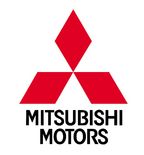Mitsubishi Models
AIRTREK
ASPIRE
ASX
BRAVO
FUSO CANTER
CARISMA
CENTURY
CHALLENGER
CHARIOT
CHARIOT GRANDIS
COLT
COLT PLUS
COLT WAGON
DEBONAIR
DELICA
DELICA CARGO
DELICA D:2
DELICA D:3
DELICA D:5
DELICA VAN
DIAMANTE
DIAMANTE WAGON
DIGNITY
DINGO
DION
ECLIPSE CROSS
ECLIPSE SPYDER
EK ACTIVE
EK CUSTOM
EK SPORT
EK WAGON
EK SPACE
EMERAUDE
ENDEAVOR
ETERNA
ETERNA SAVA
EVOLUTION X
FREECA
FTO
FUSO
GALANT
GALANT FORTIS
GALANT HATCHBACK
GALANT SIGMA
GALANT SPORTS
GALANT WAGON
GRANDIS
GTO
I
I-MIEV
Mitsubishi photos, specs - Car Pictures & Images
 Mitsubishi Motors Corporation (三菱自動車工業株式会社, Mitsubishi Jidōsha Kōgyō Kabushiki Kaisha?) is the fifth largest automaker in Japan and the fifteenth largest in the world by global unit sales. It is part of the Mitsubishi keiretsu, formerly the biggest industrial group in Japan, and was formed in 1970 from the automotive division of Mitsubishi Heavy Industries. Throughout its history it has courted alliances with foreign partners, a strategy pioneered by their first president Tomio Kubo to encourage expansion, and continued by his successors. A significant stake was sold to Chrysler Corporation in 1971 which it held for 22 years, while DaimlerChrysler was a controlling shareholder between 2000 and 2005. Long term joint manufacturing and technology licencing deals with the Hyundai Motor Company in South Korea and Proton in Malaysia were also forged, while in Europe the company co-owned the largest automobile manufacturing plant in the Netherlands with Volvo for ten years in the 1990s, before taking sole ownership in 2001. |
Used Mitsubishi
Thanks to these alliances it benefitted strongly in the 1970s and '80s, increasing its annual production from 250,000 to over 1.5million units. But its strong presence in south-east Asia meant it suffered more than most of its competitors in the aftermath of the 1997 East Asian financial crisis, and since then the company has struggled to consistently increase sales and maintain profitability. Mitsubishi's automotive origins date back as far as 1917, when the Mitsubishi Shipbuilding Co., Ltd. introduced the Model A, Japan's first series-production automobile. An entirely hand-built seven-seater sedan based on the Fiat Tipo 3, it proved expensive compared to its American and European mass-produced rivals, and was discontinued in 1921 after only 22 had been built. In 1934, Mitsubishi Shipbuilding was merged with the Mitsubishi Aircraft Co., a company established in 1920 to manufacture aircraft engines. The unified company was known as Mitsubishi Heavy Industries (MHI), and was the largest private company in Japan. MHI concentrated on manufacturing aircraft, ships, railroad cars and machinery, but in 1937 developed the PX33, a prototype sedan for military use. It was the first Japanese-built passenger car with full-time four-wheel drive, a technology the company would return to almost fifty years later in its quest for motorsport and sales success. Immediately following the end of the Second World War, the company returned to manufacturing vehicles. Fuso bus production resumed, while a small three-wheeled cargo vehicle called the Mizushima and a scooter called the Silver Pigeon were also developed. However, the zaibatsu (Japan's family-controlled industrial conglomerates) were ordered to be dismantled by the Allied powers in 1950, and Mitsubishi Heavy Industries was split into three regional companies, each with an involvement in motor vehicle development: West Japan Heavy-Industries, Central Japan Heavy-Industries, and East Japan Heavy-Industries. East Japan Heavy-Industries began importing the Henry J, an inexpensive American sedan built by Kaiser Motors, in knockdown kit (CKD) form in 1951, and continued to bring them to Japan for the remainder of the car's three year production run. The same year, Central Japan Heavy-Industries concluded a similar contract with Willys (now owned by Kaiser) for CKD-assembled Jeep CJ-3Bs. This deal proved more durable, with licensed Mitsubishi Jeeps in production until 1998, thirty years after Willys themselves had replaced the model. » Read More About Mitsubishi |






